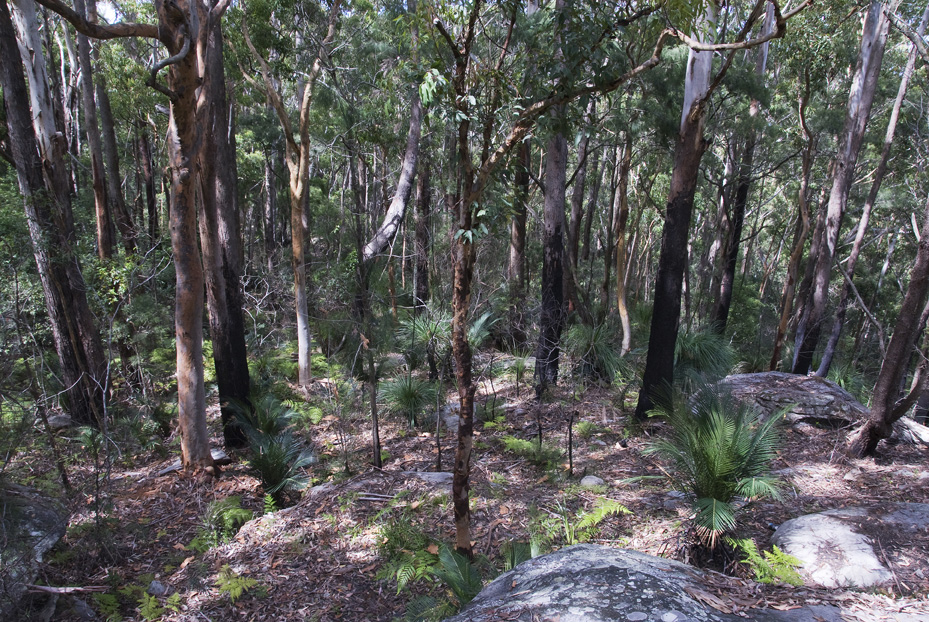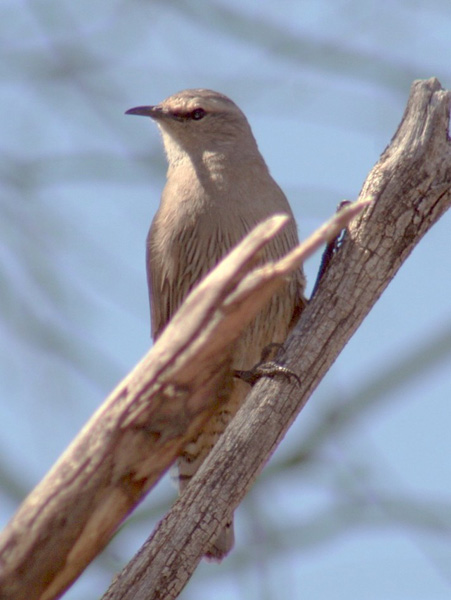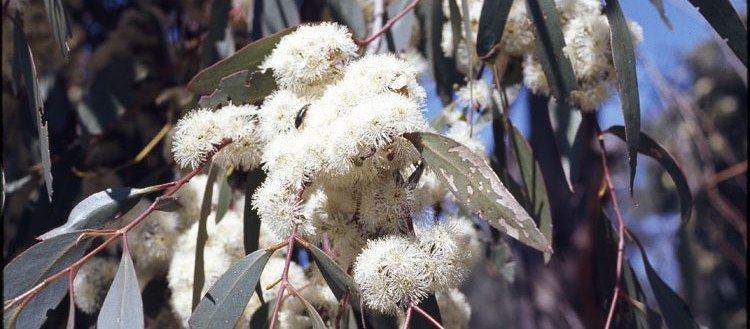Habitat
 Eucalyptus
trees are adapted to
survive in numerous conditions, making them a favorite choice in worldwide horticulture.
However, nearly all of the over 700 species are native to
Australia or Tasmania, the lands famous for charismatic animals like
the
kangaroo,
wallaby, and
platypus, desert creatures like the
bearded dragon lizard, and venomous spiders like the
Sydney funnel-web.
Eucalyptus
trees are adapted to
survive in numerous conditions, making them a favorite choice in worldwide horticulture.
However, nearly all of the over 700 species are native to
Australia or Tasmania, the lands famous for charismatic animals like
the
kangaroo,
wallaby, and
platypus, desert creatures like the
bearded dragon lizard, and venomous spiders like the
Sydney funnel-web.
Photo: Christo Doherty
Specifically, the broad leaf peppermint gum (E.
dives) is native to the states of New South Wales and Victoria,
along the Great Dividing Range.
These mountains rise along the southeastern corner of
Australia’s mainland.
Eucalyptus dives grows most
frequently in forests positioned on dry, sloped ground with
relatively poor soil, alongside species such as inland scribbly gum
(E. rossii), red box (E.
polyanthemos), and large-flowered bundy (E.
nortonii). The
understory in these forests is typically grassy with small shrubs.
Hollow trunks and fallen timber create habitats for a variety
of fauna, such as the brown treecreeper and other bird species, as
well as various small reptiles and amphibians.
Mammals, such as the common
wombat, like to dig burrows in these woods.
trunks and fallen timber create habitats for a variety
of fauna, such as the brown treecreeper and other bird species, as
well as various small reptiles and amphibians.
Mammals, such as the common
wombat, like to dig burrows in these woods.
Conservative measures have been taken in many farming communities to protect these woodlands from destruction by livestock overgrazing, removal of soil and organic substrates, and improper management of agricultural wastes.
Follow this link to discover the Adaptations that allow eucalyptus trees to grow all over the world.
Photo: Rhonda Hansch
